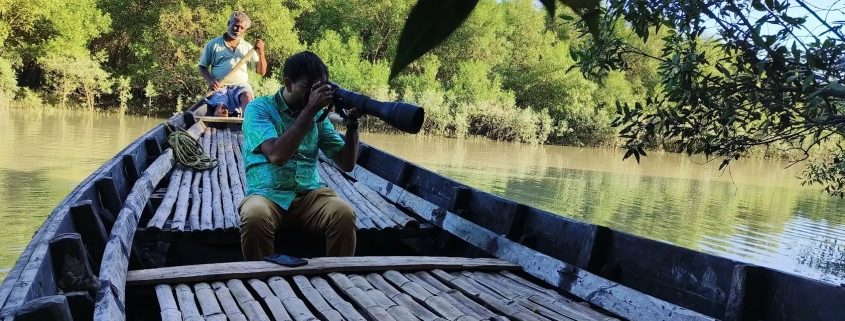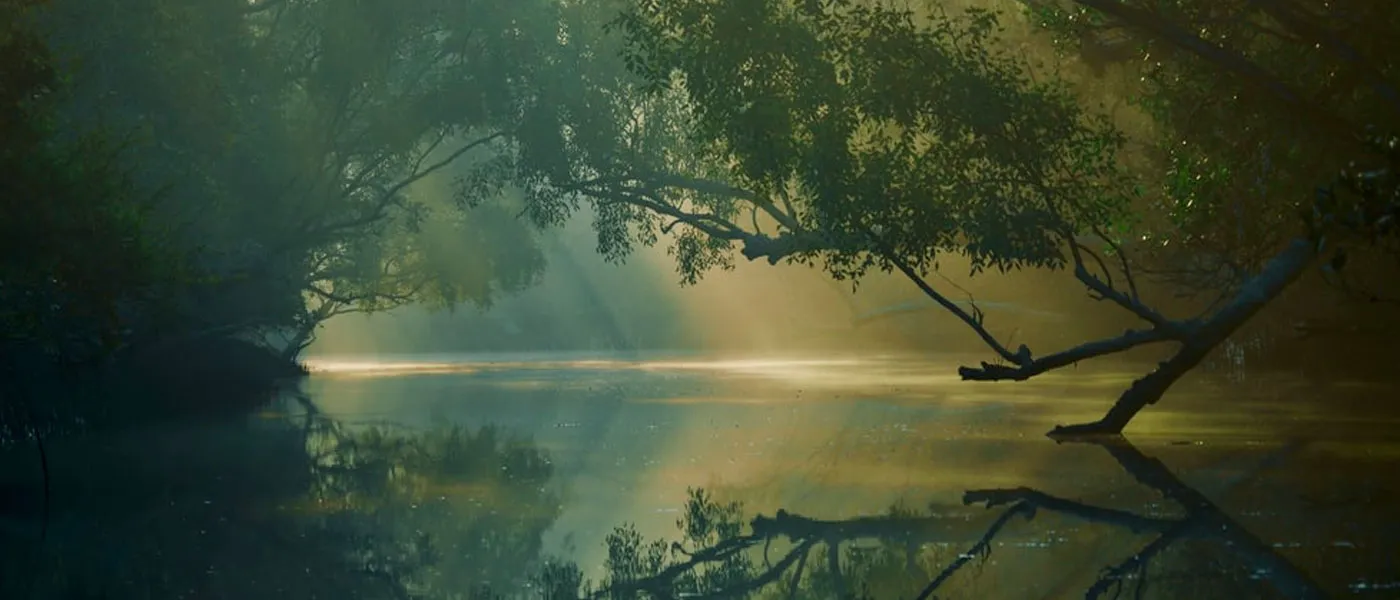- 1 Day Sundarban Tour
Pricing:
- ₹2799 per adult
- ₹1399 for children aged 4-8 years
- Free for children aged 1-4 years (under 48 months)
Facilities Included:
- Welcome Drink:
- Transportation: [Pick + Drop]
- Breakfast:
- Boat Safari:
- Lunch:
- Sightseeing:
- Guide Assistance:
- Snacks and Tea:
- Safety Measures:
- 1 Night 2 Days Sundarban Tour
Pricing:
- ₹4500 per adult (Non-AC room)
- ₹5000 per adult (AC room)
- ₹2250 for children aged 4-8 years
- Free for children aged 1-4 years (under 48 months)
Facilities Included:
- Welcome Drink
- Meals: All Times
- Boat Safari
- Accommodation: AC/ Non Ac
- Cultural Program:
- Visit Watchtowers and Local Attractions
- Safety
- Guided Tour
- Tea/Coffee Breaks
- 2 Night 3 Days Sundarban Tour
Pricing:
- ₹5500 per adult (Non-AC room)
- ₹6500 per adult (AC room)
- ₹2750 for children aged 4-8 years
- Free for children aged 1-4 years (under 48 months)
Facilities Included:
- Welcome Drink
- Meals: (breakfast, lunch, evening snacks, and dinner)
- Extended Boat Safaris: Multiple guided boat safaris
- Accommodation: in AC or non-AC rooms,
- Cultural Program:
- Visits to Key Attractions:
- Expert Guide:
- Tea/Coffee Breaks:

Sundarban 3 Days 2 Nights Package
Immerse in the wild beauty of Sundarbans with our 3 Days, 2 Nights adventure!

Book Sundarban 3 Days 2 Nights
Immerse in the wild beauty of Sundarbans with our 3 Days, 2 Nights adventure!
- 2 Night 3 Days Sundarban Boat Tour
Pricing:
- ₹5500 per adult (Non-AC room)
- ₹6500 per adult (AC room)
- ₹2750 for children aged 4-8 years
- Free for children aged 1-4 years (under 48 months)
Facilities Included:
- All Meals:
- Guided Boat Safaris:
- 2-Night Accommodation: Stay on the boat in comfortable AC or non-AC rooms.
- Cultural Performances:
- Attractions:
- Safety & Security:

Boat Sundarban 3 Days 2 Nights Package
Sail into the wild with our 3 Days, 2 Nights Sundarban Boat Adventure!

Sundarban 3 Days 2 Nights Package
Explore the untamed beauty of Sundarbans with a thrilling 3 Days, 2 Nights boat tour!
Eco-Tourism in Sundarbans: How to Travel Sustainably

Eco-Tourism in Sundarban: The Sundarbans, a UNESCO World Heritage Site, is not only the world’s largest mangrove forest but also a haven for eco-tourists. Its lush greenery, unique biodiversity, and serene waterways offer a rare glimpse into unspoiled nature. As tourism in this delicate ecosystem grows, adopting sustainable travel practices becomes vital to preserving its beauty and biodiversity for future generations. This guide will help you explore the Sundarbans responsibly while leaving a minimal environmental footprint. We will discuss some more about “Eco-Tourism in Sundarban”

Why Choose the Eco-Tourism in Sundarban?
The Sundarbans’ unparalleled natural beauty and rich wildlife make it a perfect destination for eco-tourism. Here are some compelling reasons to visit:
- Biodiversity Hotspot: Home to the iconic Royal Bengal Tiger, the Sundarbans boasts a diverse range of flora and fauna, including endangered species.
- Tranquility: Its remote location offers a serene escape from urban life, making it an ideal spot for nature lovers.

- Cultural Richness: The Sundarbans is also home to vibrant local communities with unique traditions and lifestyles closely tied to nature.
Top Tips for Sustainable Travel in the Sundarbans
When visiting the Sundarbans, it’s crucial to be mindful of your environmental impact. Here are some tips for eco-friendly travel:
1. Choose Eco-Friendly Accommodations
Opt for eco-lodges or sustainable resorts that follow green practices, such as using solar energy, reducing waste, and supporting local communities.
2. Respect Wildlife and Nature
- Avoid feeding or disturbing wildlife.
- Stay on designated paths to prevent damage to vegetation.
- Use biodegradable products to minimize pollution.

3. Travel with a Purpose
Participate in activities that support conservation efforts, such as mangrove planting programs or wildlife awareness tours.
4. Minimize Plastic Use
Carry reusable water bottles, cloth bags, and eco-friendly containers to avoid single-use plastics.
5. Support Local Communities
Buy handmade crafts, local produce, and use local guides and services to contribute directly to the livelihood of the Sundarbans’ residents.
Read More:
Eco-Friendly Activities in the Sundarbans

Here are some sustainable activities to include in your itinerary:
1. Wildlife Safaris
Explore the Sundarbans on eco-friendly boats guided by local experts. Keep your cameras ready for a chance to spot Royal Bengal Tigers, spotted deer, or saltwater crocodiles.
2. Birdwatching
The Sundarbans is a birdwatcher’s paradise with species like herons, kingfishers, and storks. Visit during the winter months for migratory birds.
3. Canoe Rides
Take a serene canoe ride through narrow creeks for an intimate experience of the mangrove forest.
4. Village Tours
Learn about the culture, traditions, and sustainable fishing practices of local communities.

Challenges Facing the Sundarbans
Eco-tourism can only thrive if the challenges facing the Sundarbans are addressed. These include:
- Rising Sea Levels: Due to climate change, parts of the Sundarbans are at risk of submergence.
- Over-Tourism: Increased footfall without proper management can lead to habitat destruction.
- Plastic Pollution: Improper waste disposal poses a serious threat to the ecosystem.
As a responsible traveler, you play a vital role in overcoming these challenges by adopting sustainable practices.
Plan Your Sustainable Trip
For a seamless eco-tourism experience in the Sundarbans, book your tour with trusted organizations that prioritize sustainability. Royal Sundarban Tourism and Sundarban Leisure Tourism, powered by Argusdna, offer eco-conscious packages that align with conservation goals.

Book Your Eco-Tourism Adventure Now:
- Royal Sundarban Tourism
- Sundarban Leisure Tourism
- Powered by Argusdna: https://argusdna.com/








